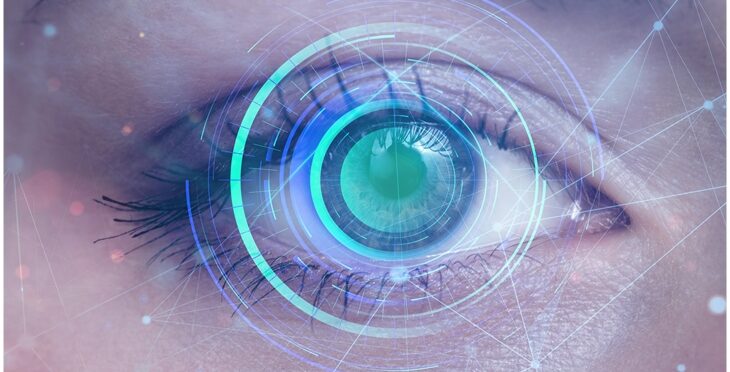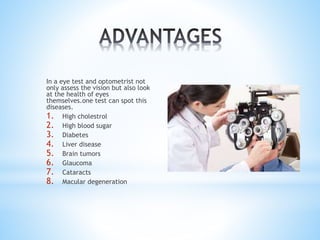The Function of Advanced Diagnostic Devices in Identifying Eye Disorders
In the realm of ophthalmology, the utilization of advanced analysis tools has actually changed the very early recognition and management of numerous eye problems. As the need for accurate and timely medical diagnoses proceeds to expand, the assimilation of sophisticated devices like optical coherence tomography and aesthetic area screening has actually come to be indispensable in the world of eye care.
Relevance of Early Diagnosis
Very early diagnosis plays a critical function in the efficient monitoring and treatment of eye problems. Timely identification of eye conditions is important as it enables punctual intervention, potentially protecting against additional progression of the disease and minimizing long-term problems. By finding eye disorders at an onset, health care providers can provide proper treatment strategies customized to the details condition, inevitably leading to better results for patients. Very early medical diagnosis allows clients to gain access to required assistance services and resources earlier, boosting their general quality of life.

Innovation for Identifying Glaucoma
Cutting-edge diagnostic innovations play a crucial function in the very early detection and surveillance of glaucoma, a leading reason of irreparable blindness worldwide. An additional sophisticated tool is aesthetic area testing, which maps the sensitivity of a client's visual field, aiding to identify any kind of areas of vision loss quality of glaucoma. These innovative diagnostic tools make it possible for eye doctors to detect glaucoma in its very early stages, allowing for prompt intervention and better monitoring of the condition to protect against vision loss.
Role of Optical Coherence Tomography

OCT's ability to evaluate retinal nerve fiber layer density allows for accurate and objective dimensions, helping in the early detection of glaucoma also before visual area problems come to be obvious. Generally, OCT plays a crucial function in improving the diagnostic precision and administration of glaucoma, inevitably contributing to far better end results for people at danger of vision loss.
Enhancing Medical Diagnosis With Visual Area Screening
An essential part in thorough sensory evaluations, visual area testing plays a critical function in improving the This Site analysis procedure for various eye conditions. By examining the complete degree of an individual's aesthetic field, this test offers critical details regarding the practical stability of the entire aesthetic pathway, why not try here from the retina to the aesthetic cortex.
Visual field screening is particularly important in the diagnosis and administration of problems such as glaucoma, optic nerve conditions, and various neurological diseases that can impact vision. With measurable measurements of peripheral and central vision, clinicians can find refined modifications that may suggest the visibility or progression of these problems, even prior to recognizable signs occur.
Moreover, visual area screening enables the monitoring of treatment efficacy, assisting ophthalmologists tailor therapeutic interventions to specific people. eyecare near me. By tracking adjustments in visual field efficiency gradually, health care service providers can make educated choices about changing medicines, advising surgical interventions, or carrying out other suitable procedures to protect or improve a client's visual feature
Managing Macular Degeneration

Conclusion
In final thought, advanced diagnostic devices play a critical role in recognizing more information eye disorders early on. Technologies such as Optical Comprehensibility Tomography and visual area screening have substantially improved the accuracy and efficiency of detecting conditions like glaucoma and macular deterioration.